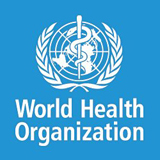
As the 2015 target date for the Millennium Development Goals (MDGs) nears, ending preventable maternal mortality (EPMM) remains an unfinished agenda and one of the world’s most critical challenges despite significant progress over the past decade. Although maternal deaths worldwide have decreased by 45% since 1990, 800 women still die each day from largely preventable causes before, during, and after the time of giving birth. Ninety-nine per cent of preventable maternal deaths occur in low- and middle-income countries (1). Within countries, the risk of death is disproportionately high among the most vulnerable segments of society. Maternal health, wellbeing and survival must remain a central goal and an investment priority in the post-2015 framework for sustainable development to ensure that progress continues and accelerates, with a focus on reducing inequities and discrimination. Attention to maternal mortality and morbidity must be accompanied by improvements along the continuum of care for women and children, including commitments to sexual and reproductive health and newborn and child survival.
The time is now to mobilize global, regional, national and community-level commitment for EPMM. Analysis suggests that “a grand convergence” is within our reach, when through concerted efforts we can eliminate wide disparities in current maternal mortality and reduce the highest levels of maternal deaths worldwide (both within and between countries) to the rates now observed in the best-performing middle-income countries (2). To do so would be a great achievement for global equity and reflect a shared commitment to a human rights framework for health.
High-functioning maternal health programmes require awareness of a changing epidemiological landscape in which the primary causes of maternal death shift as maternal mortality ratios (MMRs) decline, described as “obstetric transition”(3). Strategies to reduce maternal mortality must take into account changing patterns of fertility and causes of death. The ability to count every maternal and newborn death is essential for understanding immediate and underlying causes of these deaths and developing evidence-informed, context-specific programme interventions to avert future deaths.
The EPMM targets and strategies are grounded in a human rights approach to maternal and newborn health, and focus on eliminating significant inequities that lead to disparities in access, quality and outcomes of care within and between countries. Concrete political commitments and financial investments by country governments and development partners are necessary to meet the targets and carry out the strategies for EPMM.
Targets for maternal mortality reduction post-2015
Maternal health stakeholders strongly support the continued need for a specific target for maternal mortality reduction in the post-2015 development framework, with the ultimate goal of ending all preventable maternal deaths. To achieve this goal, progress needs to be accelerated as well as concerted national/global efforts and global targets are needed to reduce disparities in maternal mortality between countries. Within countries, national targets and plans must also address disparities among subgroups to help achieve both national and global equity, and a “grand convergence” in maternal survival.
Global targets to increase equity in global MMR reduction
By 2030, all countries should reduce MMR by at least two thirds of their 2010 baseline level. The average global target is an MMR of less than 70/100 000 live births by 2030. The supplementary national target is that no country should have an MMR greater than 140/100 000 live births (a number twice the global target) by 2030.
Achieving the above post-2015 global target will require an average global ARR in MMR of 5.5%, similar to the current MDG 5a target. To achieve the global target all countries must contribute to the global average by reducing their own MMR from the estimated 2010 levels (based on forthcoming maternal mortality estimates 1990–2015 developed by the Maternal Mortality Estimation Inter-Agency Group (MMEIG)).
Intensified action is called for in countries with the highest MMRs who will need to reduce their MMR at an ARR that is steeper than 5.5%. However, the secondary target is an important mechanism for reducing extremes of between-country inequity in global maternal survival. Countries with the lowest MMRs find it difficult to achieve a two third reduction from the baseline. It is recognized that when the absolute number of maternal deaths is very small, differences become statistically meaningless, hampering comparisons. However, even in these countries, there are likely to be subpopulations with high risk of maternal death, and thus achieving within-country equity in maternal survival would be an important goal.
These targets while ambitious are feasible given the evidence of progress achieved over the past 20 years. They will focus attention on maternal mortality reduction and maternal and newborn health as critical components of the post-2015 development agenda. The process for setting these targets and the choice of indicators are articulated elsewhere (11,12).
Country targets to increase equity in global MMR reduction
To prioritize equity at the country level, expanded and improved equity measures should be developed to accurately track efforts to eliminate disparities in MMR between subpopulations within all countries.
Country targets: The MMR target of less than 70 by 2030 applies at the global level but not necessarily for individual countries. The following sets of national targets are recommended (Figure 2).
- For countries with MMR less than 420 in 2010 (the majority of countries worldwide): reduce the MMR by at least two thirds from the 2010 baseline by 2030.
- For all countries with baseline MMR greater than 420 in 2010: the rate of decline should be steeper so that in 2030, no country has an MMR greater than 140.
- For all countries with low baseline MMR in 2010: achieve equity in MMR for vulnerable populations at the subnational level.
Target-setting is accompanied by the need for improved measurement approaches and data quality to allow more accurate tracking of country progress as well as causes of death. To contextualize the targets and allow collaborative strategic planning and best practice sharing at the regional level, it may be appropriate, in some regions, to define more ambitious targets.